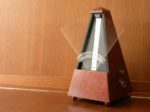
As a follow-up to our previous article, which covered the general ABRSM piano examination syllabus, we asked some of our past examinees to share tips that helped them score distinctions for their exam. Here at Liberty Park Music, we present their collective advice. Read and utilize the top 7 valuable tips gathered for your child to ace their ABRSM Piano Examination 2018!
1.Practice, Practice, Practice
Ultimately, practice is key. Just like exercising or studying for an exam, effort produces results. As mentioned in our previous article, the examination pieces monopolize 60% of the total score. Acing this section is equivalent to getting a distinction served on a platter for your child, hence they should practice the pieces every day, for at least 30 minutes each day.
2.Listen to the CD
The examination book contains a CD recordings of all the piano pieces in the three lists. Before practicing, your child should listen to the piece they are playing. Listening to the music helps them learn by imitation and gives them a frame of reference to how each piece should be interpreted musically.
3.Train with a Metronome
Tempo consistency is one of the things that examiners lookout for: this includes the basics of knowing the time signature and value of each note - length relative to another note. Keeping a steady tempo, like all the other components, has to be cultivated.
Whether your child is practicing their pieces, scales & arpeggios, or sight-reading, using the metronome instills in them a sense of rhythm, and it is highly recommended to exploit that ticking device to their benefit.
4.Add Musical Variation to Scales & Arpeggios
For a good warm-up session before preparing their piano pieces, your child can get an adequate finger workout from scales & arpeggios. Besides that, introducing musical variation and a steady tempo add value to your child’s practice and to their score.
When playing a scale, your child can supplement their practice with this pattern: start piano, then crescendo as they work their way towards the top, diminuendo during the descent and end pianissimo. Again, practice with a metronome with this pattern. For more scales and arpeggios practice, watch this 2-part video on how to improve form and structure when playing scales & arpeggios.
5.Play with Poise
Not only is having a good posture is aesthetically pleasing, posture also affects playing. From your wrists to your legs, every aspect of movement shapes the music. During the examination, do not head straight to the keyboard and start playing: advise your child to adjust the piano seat to a comfortable level first.
For example, when the seat is adjusted to an appropriate height, it’s easier to control the strength used on the pedal. It also allows your child to manage their wrist movements effortlessly. To understand more about having a correct posture, review this series on the right playing posture to adopt.
6.Overcoming the Common Nemesis: Sight-Reading
Taking a vote would result in unanimous agreement that sight-reading is pretty nerve-racking for any examinee. In this part of the exam, your child would have to play a random piece chosen by the examiner. Sight-reading essentially tests an individual’s ability to capture an entire piece at a glance while also tapping into their theoretical music knowledge.
There is 30 seconds given to the examinees: utilize that! Use those 30 seconds to test any section that they are unsure of, especially the first and last bar. When playing, keep a steady tempo throughout and avoid unnecessary lapses in-between phrases. If your child needs to improve their sight-reading, you can try these 12 steps to sight-read better.
7.Building the Foundation for Aural Tests
Though the aural test holds a small percentage, 12% to be exact, of the ABRSM examination, scoring well for this section could work to your child’s advantage if they need a few points to score that distinction!
The main part of the aural exam takes into account the depth of knowledge your child has in terms of musical terms, technical vocabulary, and classical music understanding. Knowing a few basic terms like piano, forte, legato, ritenuto, and moderato helps. In addition, learn about the 4 different periods of music and their relative composers.
Your child can expand their wealth of theoretical knowledge with a comprehensive article on musical terms and vocabulary, attached with a table of contents for effortless navigation.
For every examination, understand that the examiner is not seated at the position to fail your child. If anything, they hope to inspire the candidate to pursue classical music with a justified assessment on their performance. Work together with your child during their practice as an audience and build up their confidence while they perform for you. While these seven tips from our past examinees should boost their odds on landing that distinction, don’t forget to enjoy the journey with them.
For a concise guide, press the link to check out the infographic chart!
How to Ace ABRSM 2018
Ready to learn music?
Start learning with our 30-day free trial! Try our music courses!
About Liberty Park Music
LPM is an online music school. We teach a variety of instruments and styles, including classical and jazz guitar, piano, drums, and music theory. We offer high-quality music lessons designed by accredited teachers from around the world. Our growing database of over 350 lessons come with many features—self-assessments, live chats, quizzes etc. Learn music with LPM, anytime, anywhere!










